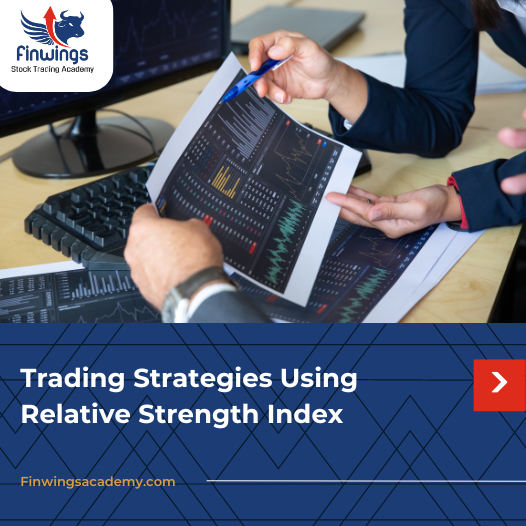Trading Strategies Using Relative Strength Index
Technical analysis course in Ahmedabad
Searching for trading chances in the stock market is our responsibility as traders. Indicators can definitely help with this when utilised properly. This also holds true for the Relative Strength Index. When learnt properly with the help of an advanced technical analysis course and applied appropriately, it can help forecast changes in sentiment, underlying supply or demand, and increasing momentum.
Additionally, trends, trend reversals, trend continuations, and stagnant corrections can all be predicted by the indicator. When you practise and gain a solid understanding of volume and price action, the RSI indicator can be a useful tool in your trading toolbox. Relative Strength Index (RSI) measures how well a stock performs in relation to itself by contrasting the strength of up and down days.
Thus, let’s talk about various index trading techniques and how to use the RSI indicator in today’s blog post:
What is RSI?
The RSI was devised by J. Welles Wilder, who described it in full in his June 1978 book New Concepts in Technical Trading Systems. Relative Strength Index (RSI) measures how well a stock performs in relation to itself by contrasting the strength of up and down days. This is a computed number with a 0–100 range. A number of 30 or less is seen as bearish, while a reading of 70 or more is bullish. Monitoring times when the market is overbought or oversold is usually beneficial.
Trading Strategies using RSI
RSI Trendlines
An upward trendline is created when the RSI is increasing by joining two or more low points and extending the line forward. In a similar vein, a downward trendline is created when the RSI is decreasing by joining two or more high points and extending the line into the future.
A real price reversal or continuation in the market is preceded by the breaking of an RSI trendline. An indication that the asset price is about to trend upward, either as a continuation of an uptrend or as a reversal of an ongoing downward trend in the market, is provided, for example, by a break above a downward trendline.
RSI and Chart Patterns
One of the greatest technical indicators to support the basic price movement cues provided by line or candlestick chart patterns is the Relative Strength Index. For example, if a downtrending price chart pattern, like a double bottom, or a bullish candlestick, like a pin bar, occurs, a buy position can be opened if the RSI shows a value below 30, which indicates oversold circumstances.
RSI Divergence
Divergence indications from the Relative Strength Index may potentially present a good trading opportunity. When the RSI and asset price do not move in tandem, this is known as a divergence. When the price is moving downward while the RSI is moving upward, this is known as a positive (bullish) divergence. This suggests that an upward reversal is going to occur and that the price may be approaching the bottom.
A negative (bearish) divergence, on the other hand, happens when the price is moving higher while the RSI is moving lower. This suggests that a downward reversal is about to occur and that the price may be approaching the top.
RSI and MACD
Because of its graphical attractiveness, simplicity in use, and convenience of application, the MACD indicator is quite popular. The MACD is a momentum and trend-following indicator that shows when the price trend is accelerating or slowing down. The MACD is primarily a trailing indication because it relies on moving averages in its calculation; nevertheless, it can be used to qualify trading signals produced by the leading RSI indicator.









